No doubt, it is one of the natural wonders of the world. Steve, a wildlife biologist by training, wanted to witness this his entire life. I happily agreed to share the experience.
Day 16: Serengeti National Park
So, what is the migration of the wildebeest? It’s when about 1.5 million wildebeest together with thousands of zebras and antelopes follow the rains in search of green grass. The animals move most often between late June and early August from the dry Serengeti plains in Tanzania to the green pastures of the Maasai Mara in Kenya. We planned our African adventure to coincide with the expected early July movements.
The most exciting part of the migration is when the animals cross the Mara River. We learned that there are 10 crossing spots. The safari guides try to predict when and where the crossing will happen. But it’s not that easy to experience and even when you do, the number of animals taking part might not be in the thousands like what you see in National Geographic documentaries.
We originally thought we would see the migration in Kenya. But this year the pastures in Tanzania were still good for the wildebeest, so the migration was late. As a result, we didn’t see it in the Maasai Mara and were a little disappointed, but we still had hopes for the Serengeti. As luck would have it, we were fortunate to see the first two crossings on the Mara River in the Serengeti.
Some people are not this lucky. Our guide, Seph, told us, one year his guests stayed in the Serengeti for 5 days to be sure to witness the migration. And when they heard that it was finally happening, they were already at the airstrip ready to leave. They were so disappointed, they even cried. They never saw the migration. One must remember that the herds always move in their own, unpredictable way. Each year is different. The whole event is quite a gamble.
When the migration happens, it’s a spectacular show. It starts with the wildebeests gathering on the benches of the river. They walk in long lines, usually following in each other’s footsteps. They try to find the best crossing spot where the water is calm and where there is not too much danger in the river. They know there are hungry crocodiles everywhere.
They move back and forth; the males are running crazily showing their strength. They hesitate. There is no one leader; they move by group mentality.
Once one starts the crossing, the others will follow. Their crossing is not easy: the current can move them down the river, they can and often jump on each other, which might result in life-threatening injuries, they can drown in the river, or some might be eaten by the crocodiles. Our Kenyan safari guide, Arif, told us, that 16000 wildebeest die in the migration every year.
When they successfully reach the other side of the river, they again run in an almost straight line while making their unique noise that sounds like “gnu” – their other name. This side of the river can be dangerous too – maybe there are lions or hyenas or cheetahs waiting for them close by. But there is the promise of the green grass that always draws them forward.
In October, when the rains return to the Serengeti, the movement starts again – this time back from the Maasai Mara.
So, there we were on the 16th day of our safari on a Monday morning when we tried to find the wildebeests and see whether they were ready for the crossing. When we arrived at the river around 11, Seph told us he felt that the first crossing will happen soon. He tried to position the safari vehicle in a way that we had a good view of the river but at the same time we somehow were covered by the bushes or trees, so the animals wouldn’t be disturbed. This wasn’t as easy as it sounds because there were many other guides also thinking along the same lines. We saw the wildebeest on the other side of the river hesitating, walking back and forth. After some time, Seph announced, he was going to move to a different, farther location. It seemed to him that the wildebeest would cross there and not where we were currently waiting.
Just as he started driving, we noticed that the other vehicles started following us. I went in the back of the jeep to take a picture of the long line of vehicles, when I heard “Hold on, hold on!” Seph suddenly started driving like a madman! I couldn’t move back to my seat, I could only drop to the nearest one next to me to make sure I wasn’t hurt. Steve told me later, he thought I “flew out” from the vehicle. Seph was driving across the field, off the road, through the rugged terrain. This is allowed only during the migration when drivers want to get closer to the river. Then there we were, right by the river witnessing the amazing spectacle. But not all were as lucky as us because they arrived late or couldn’t find a good viewing spot.
And guess what? Two hours later we witnessed the second river crossing of this year’s wildebeest migration. For this we needed to wait longer and even though we didn’t get as close to the river as the first time, it was noticeably larger than the first group. Whereas the first crossing maybe had a couple of hundred wildebeest, the second one had at least 500.
The second one was also more dramatic, as we observed a young one struggling with the current. But he made it to shore to the delight of all.
We both were incredibly happy to have seen the wildebeest migration. We were all smiles throughout the day, Seph included. And for days afterwards all three of us eagerly relived those experiences.
If you ever can go on an East African safari, we would highly recommend that you try to plan it around the wildebeest migration. It’s truly one of the greatest shows on Earth.
Check out the videos below to get a taste of the leading edge of the migration.
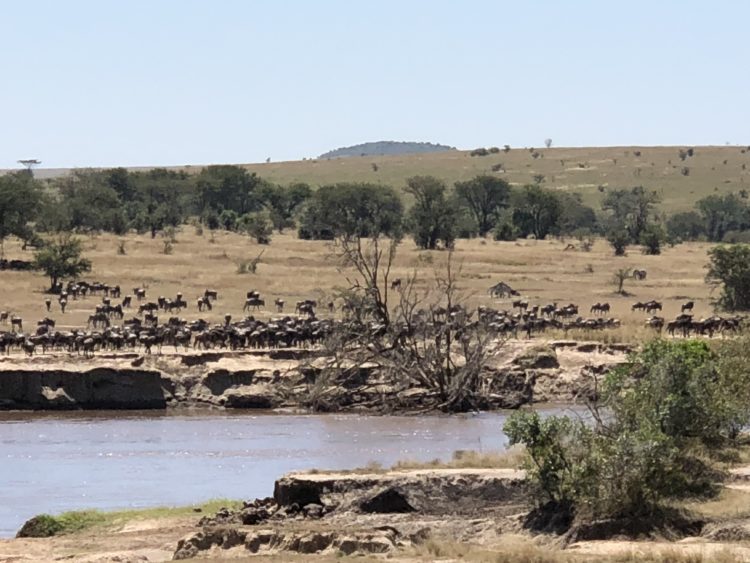
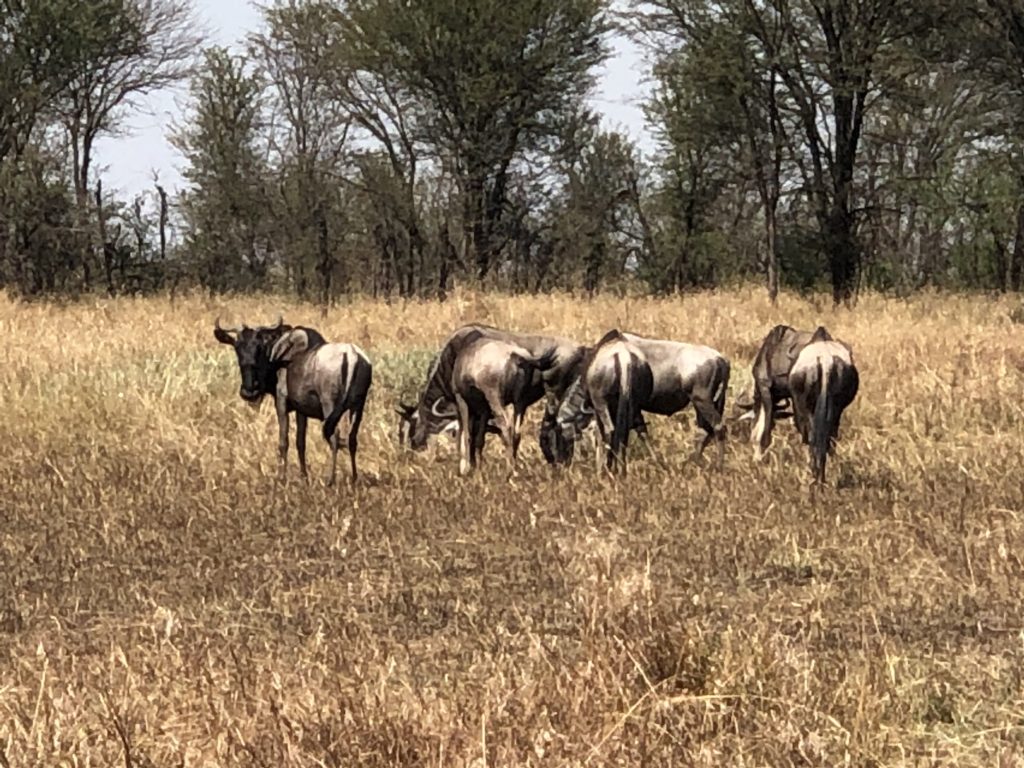

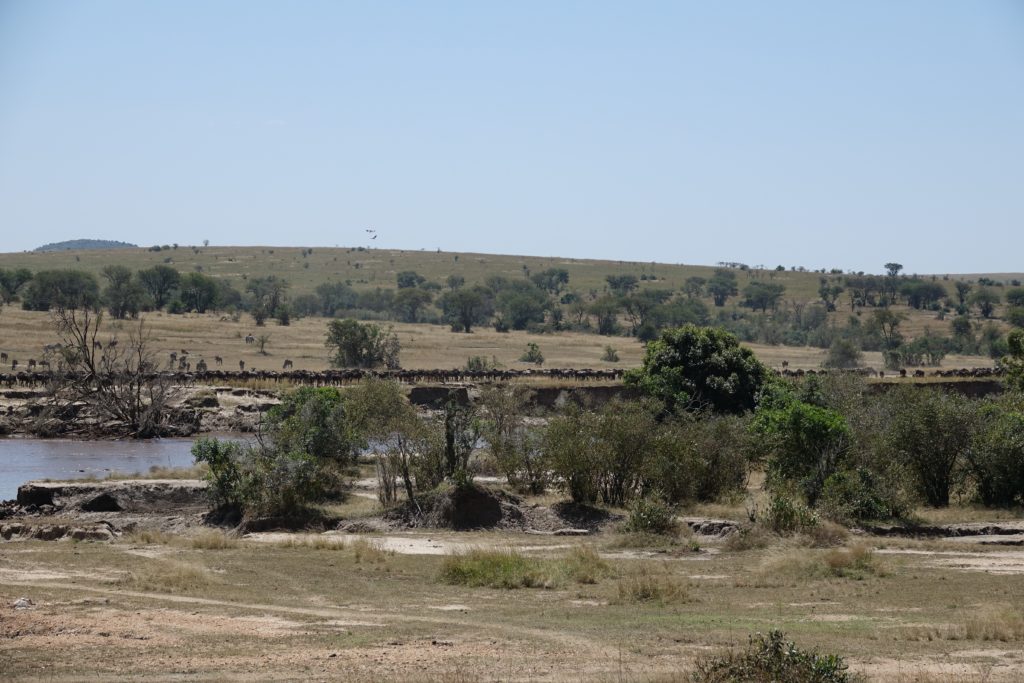

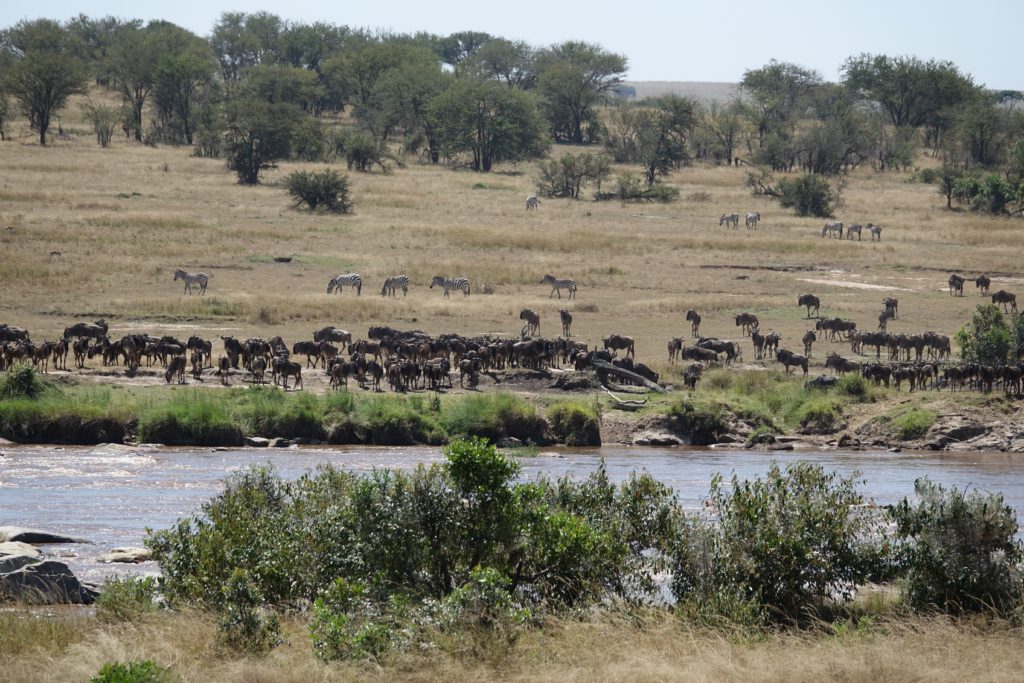

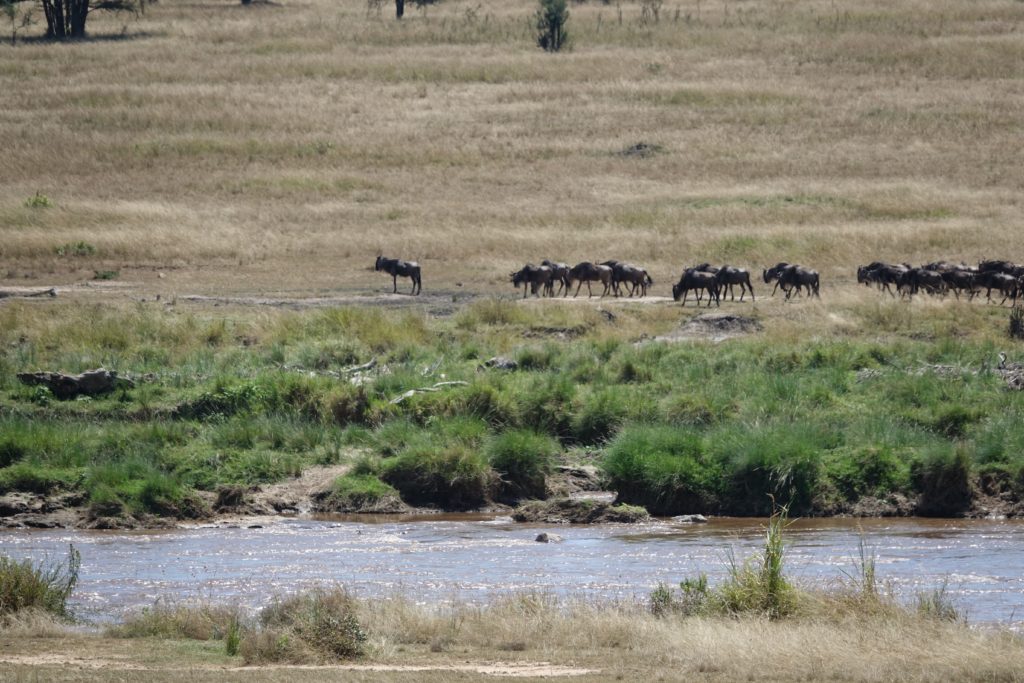

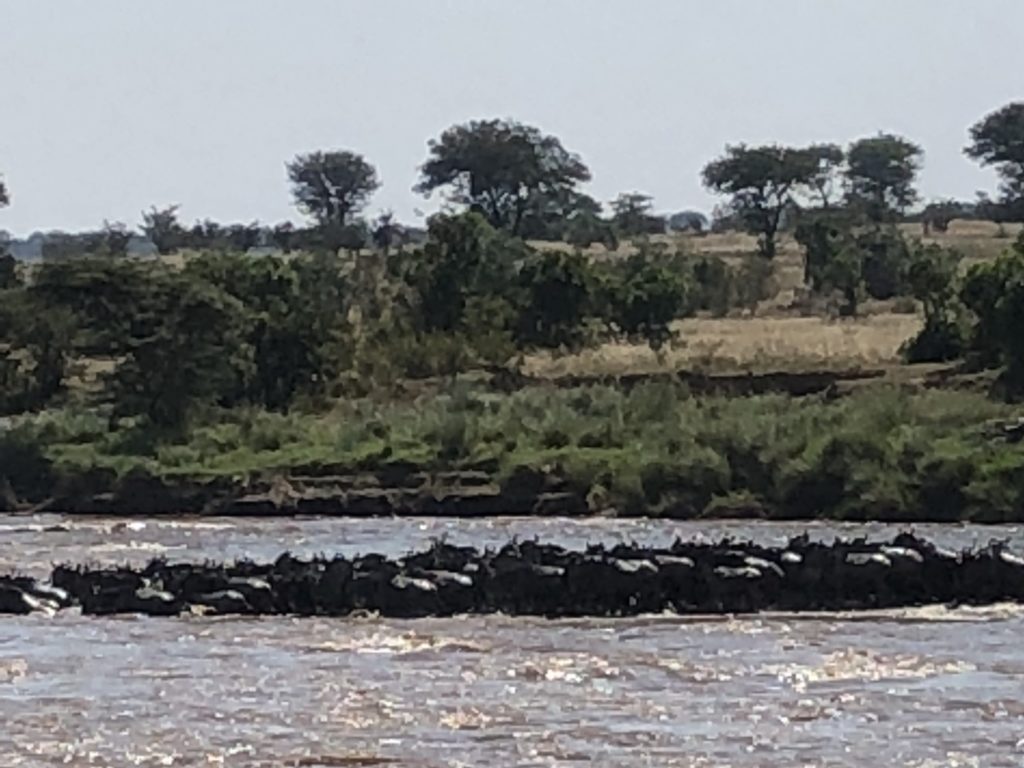
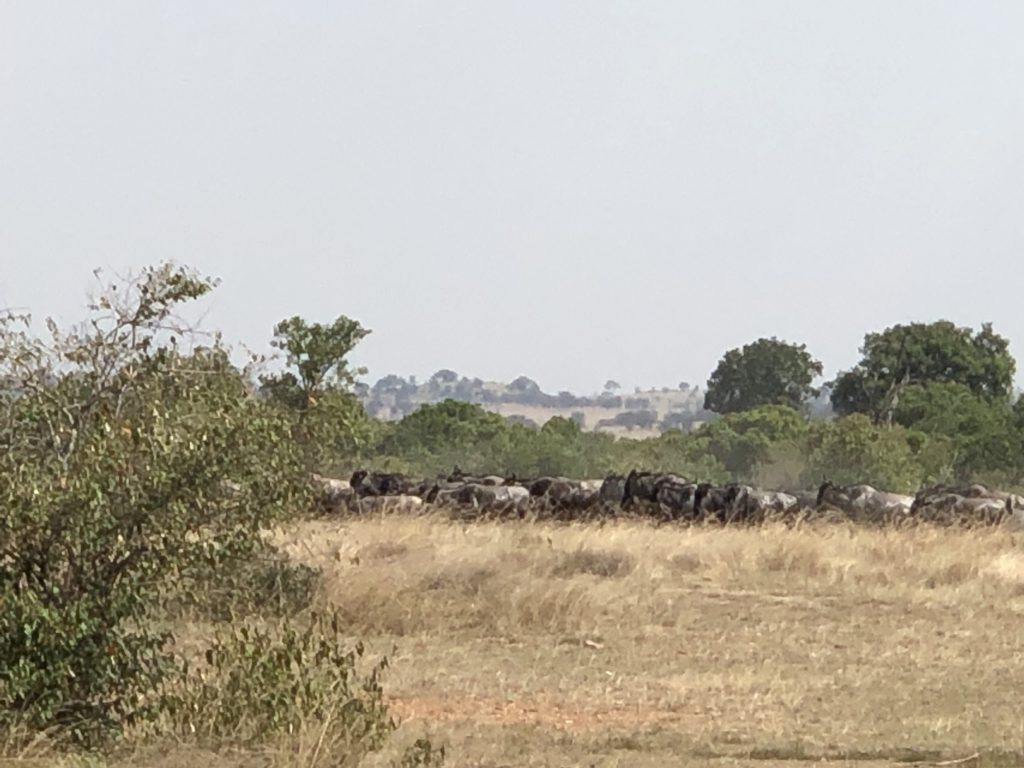
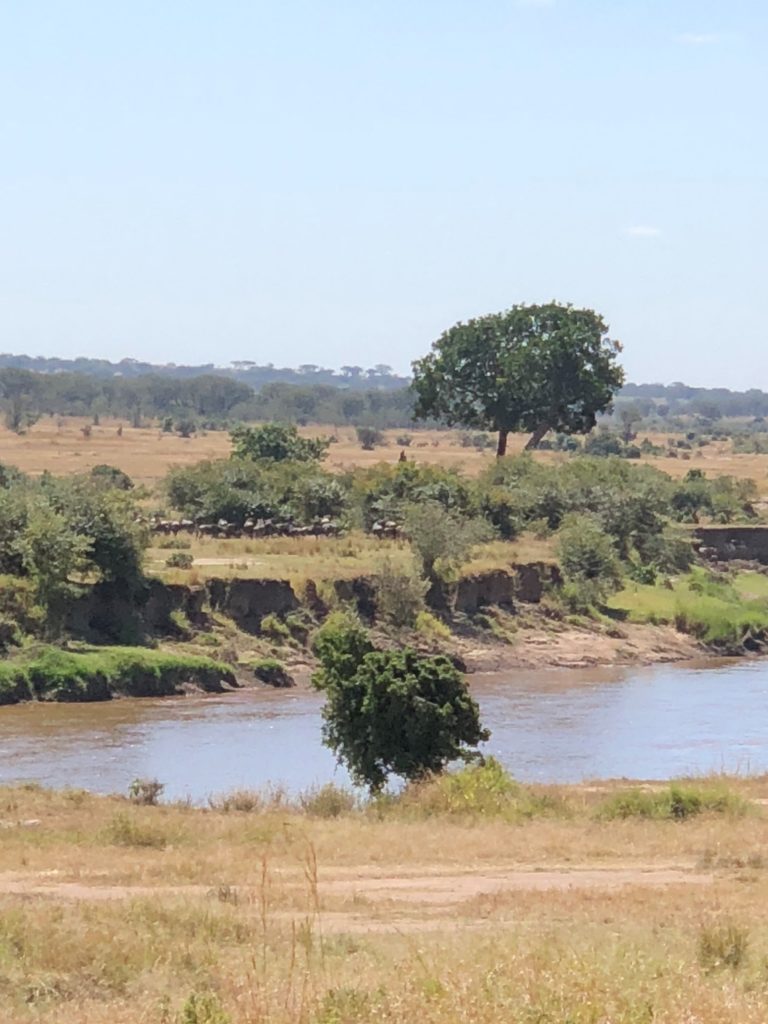
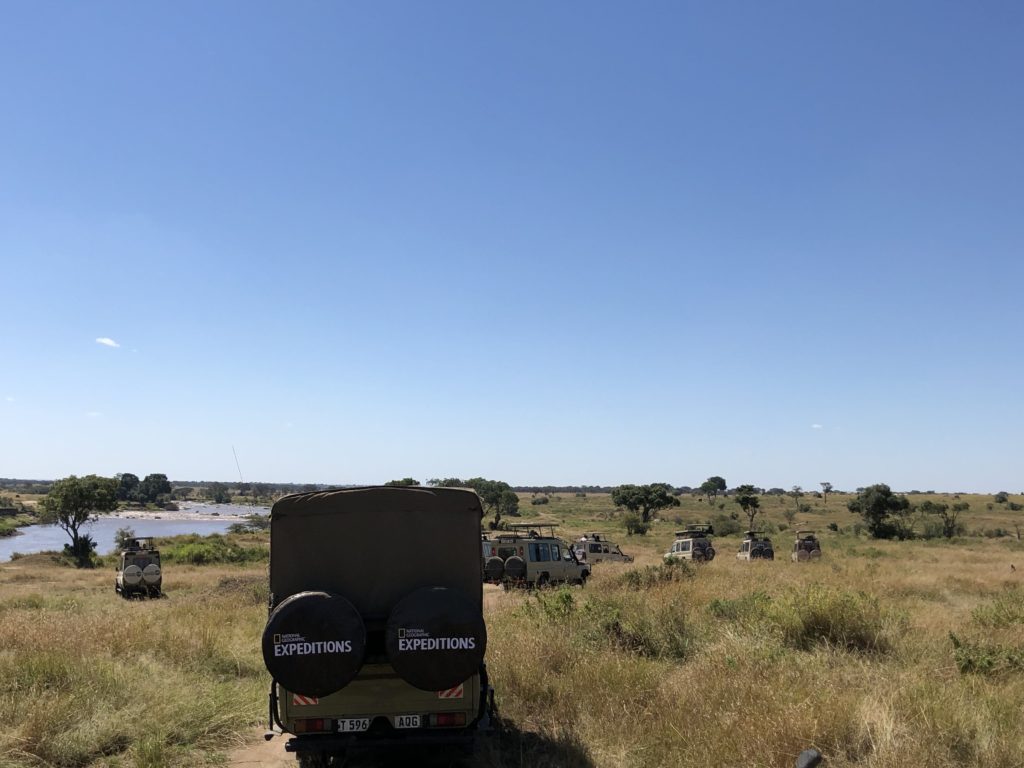
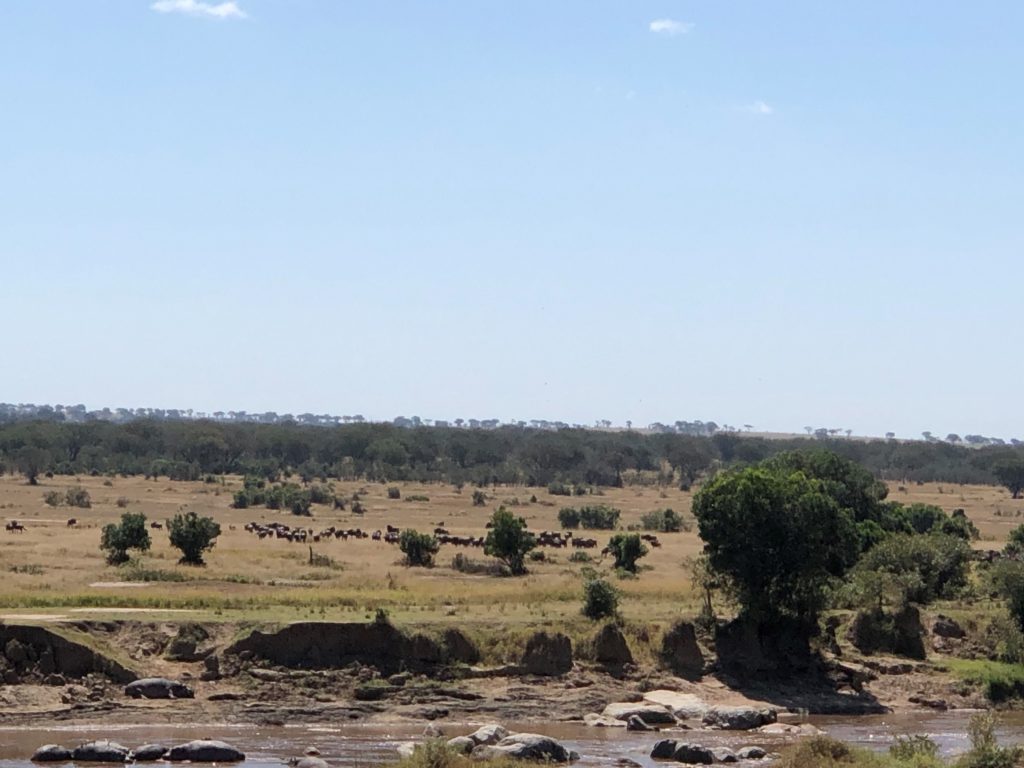
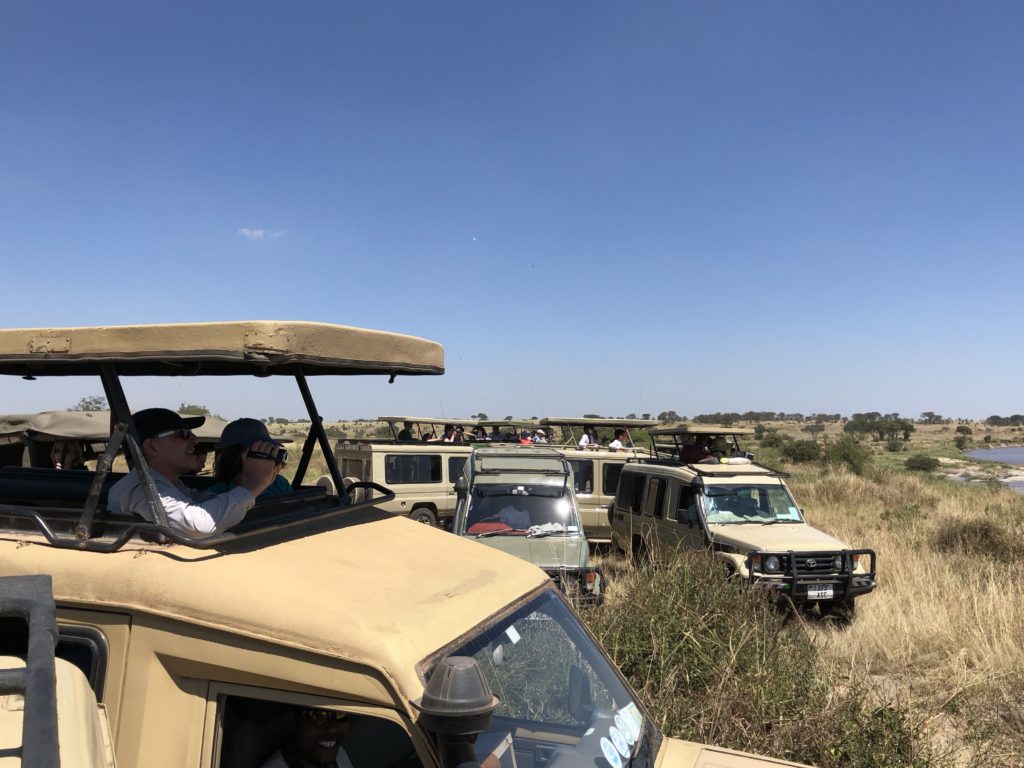
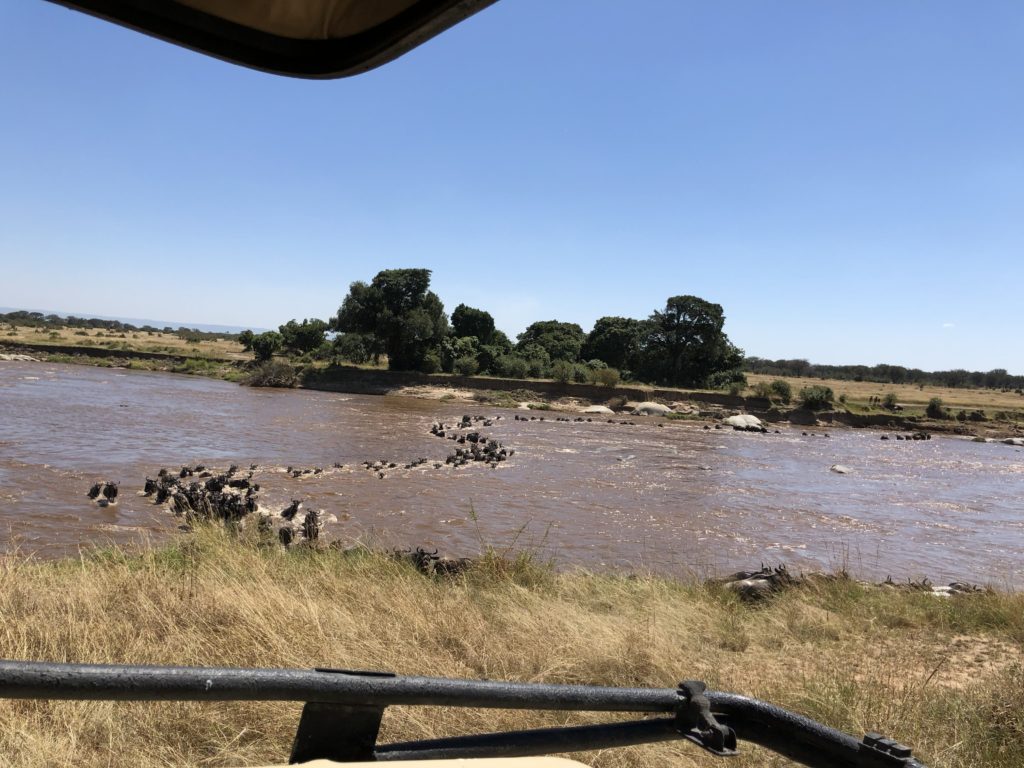
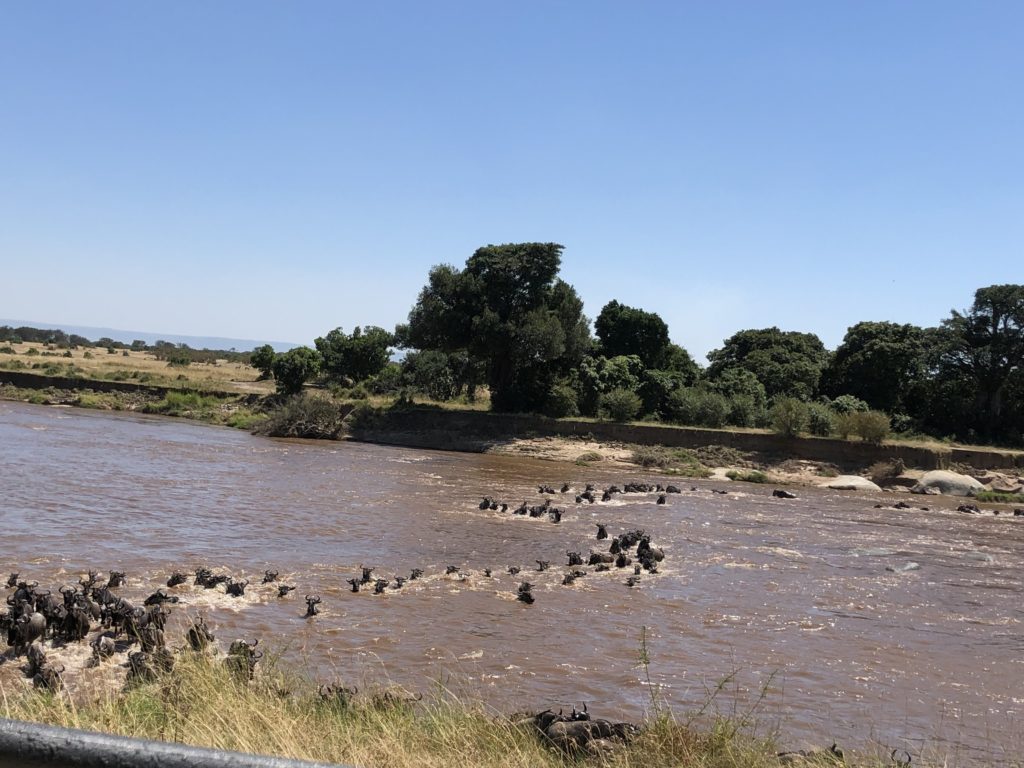
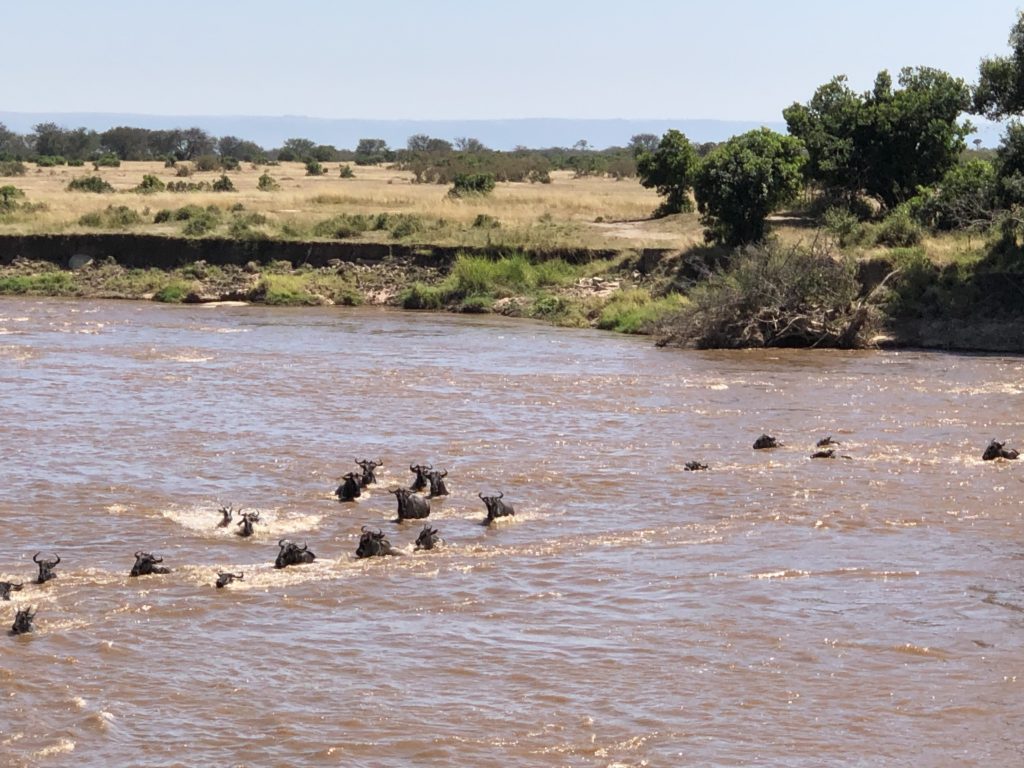
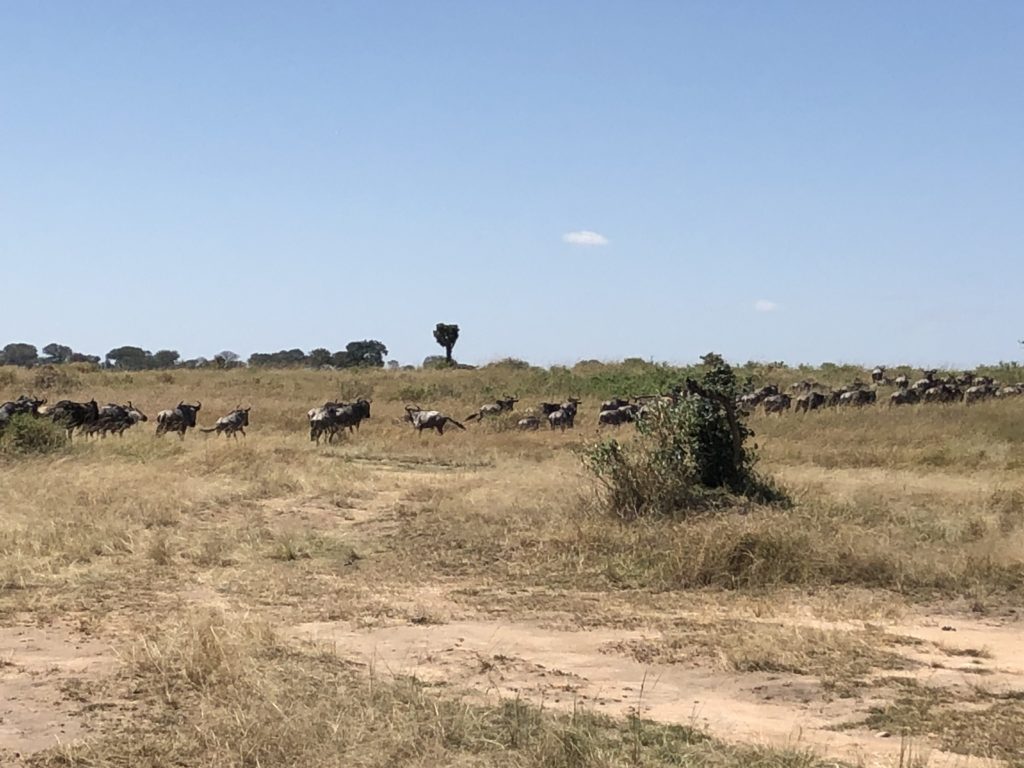

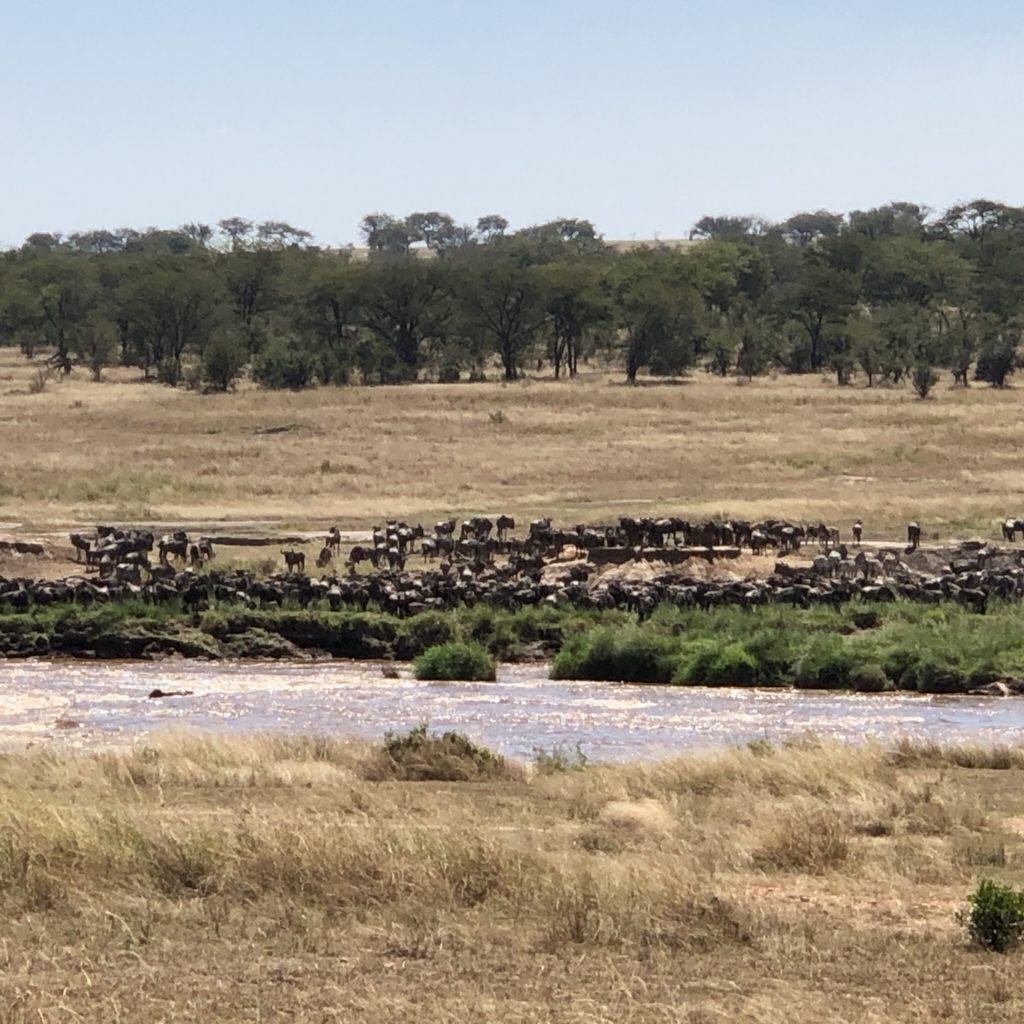
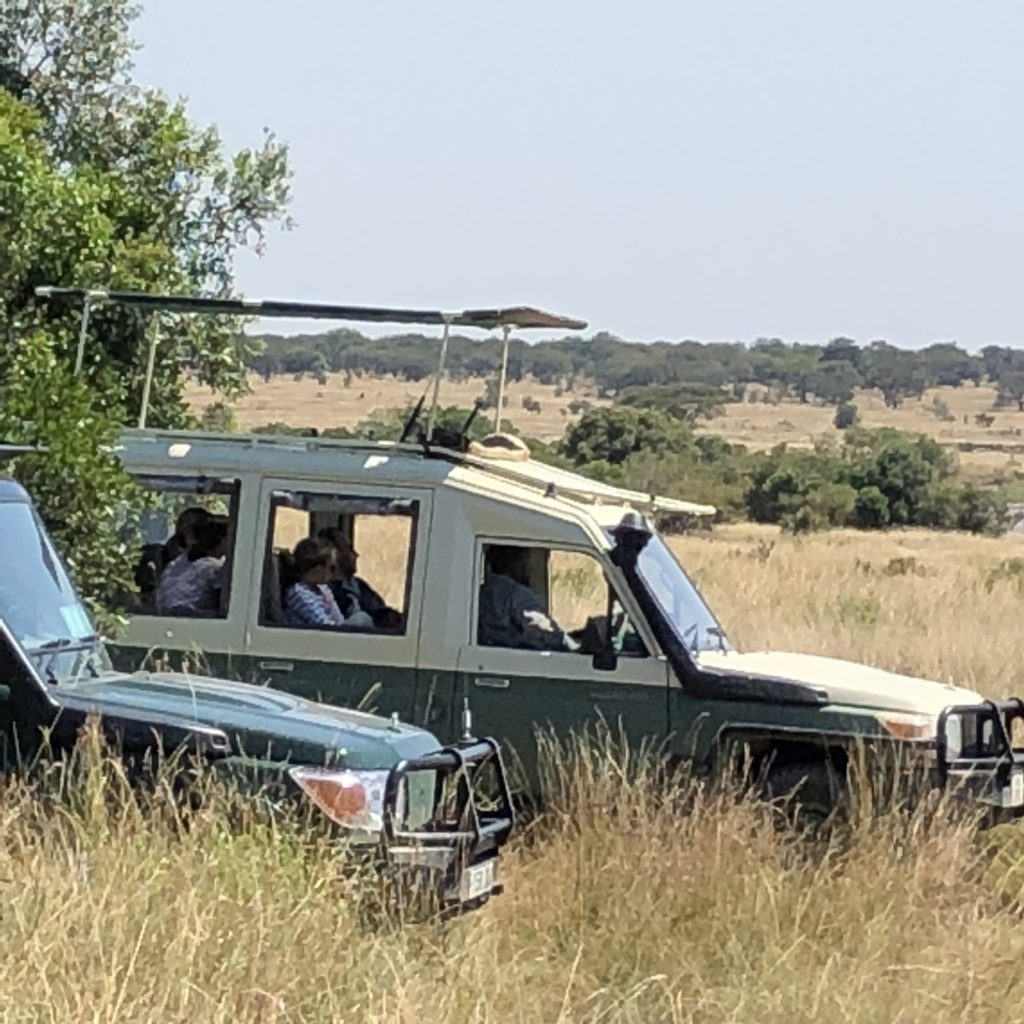
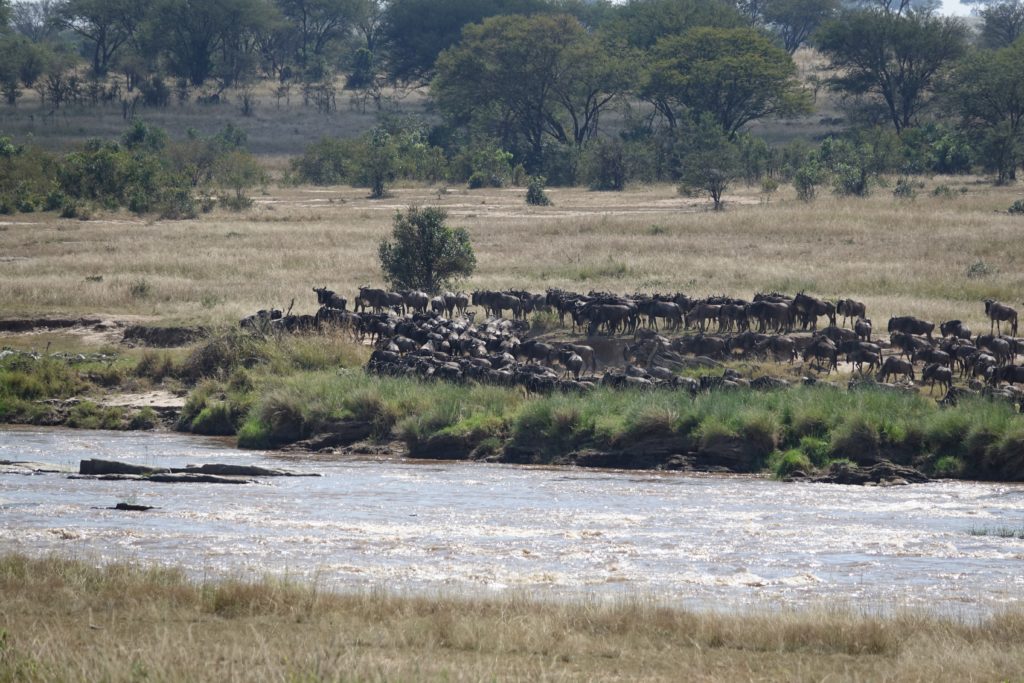
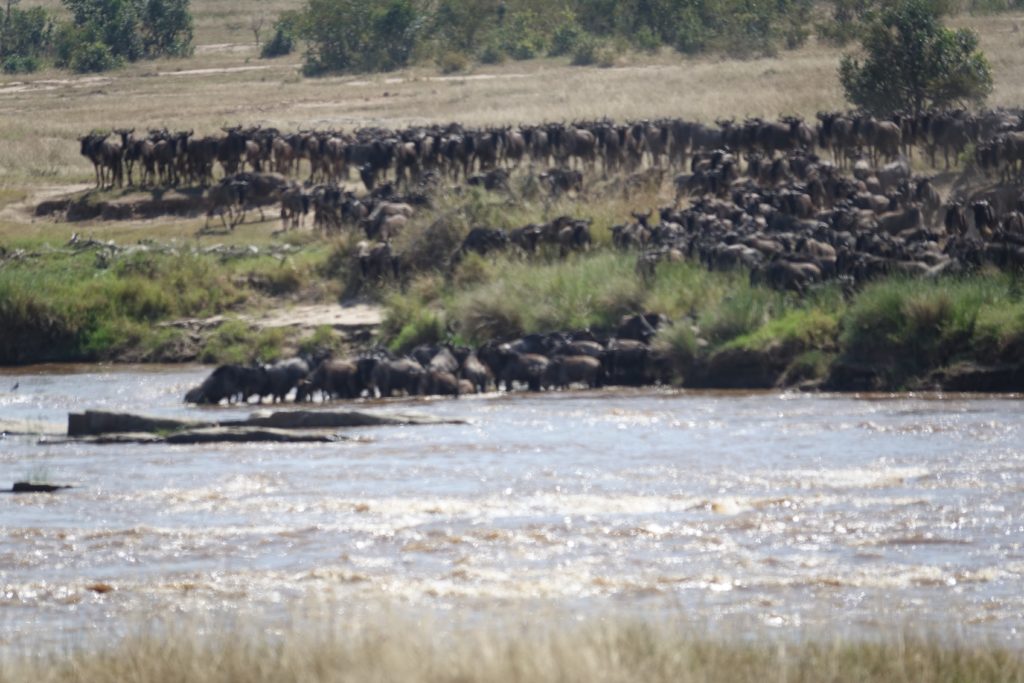
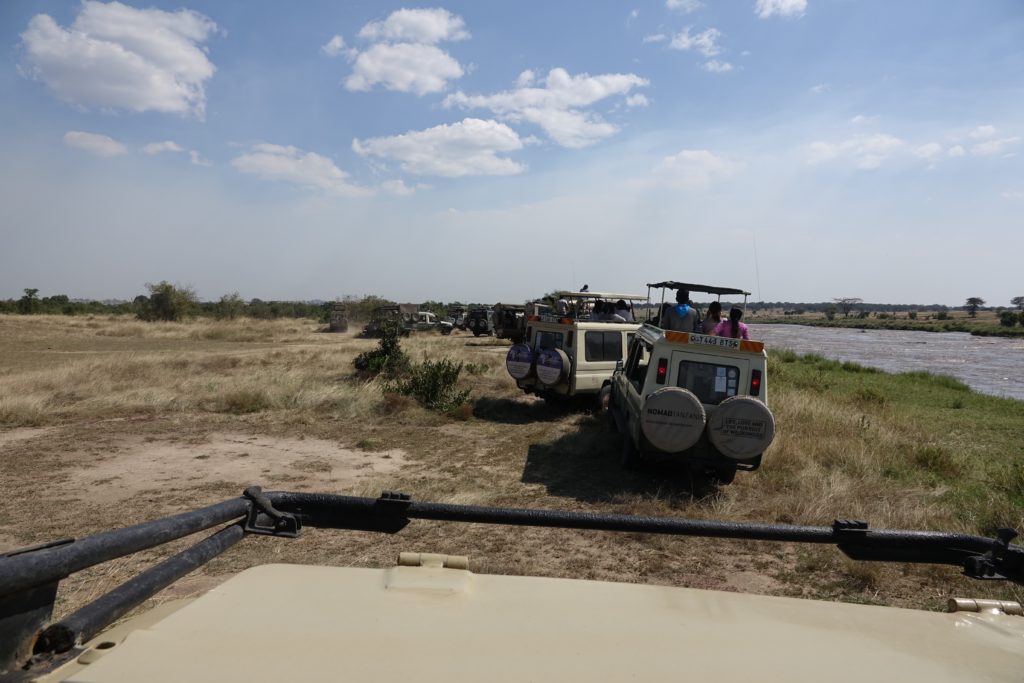
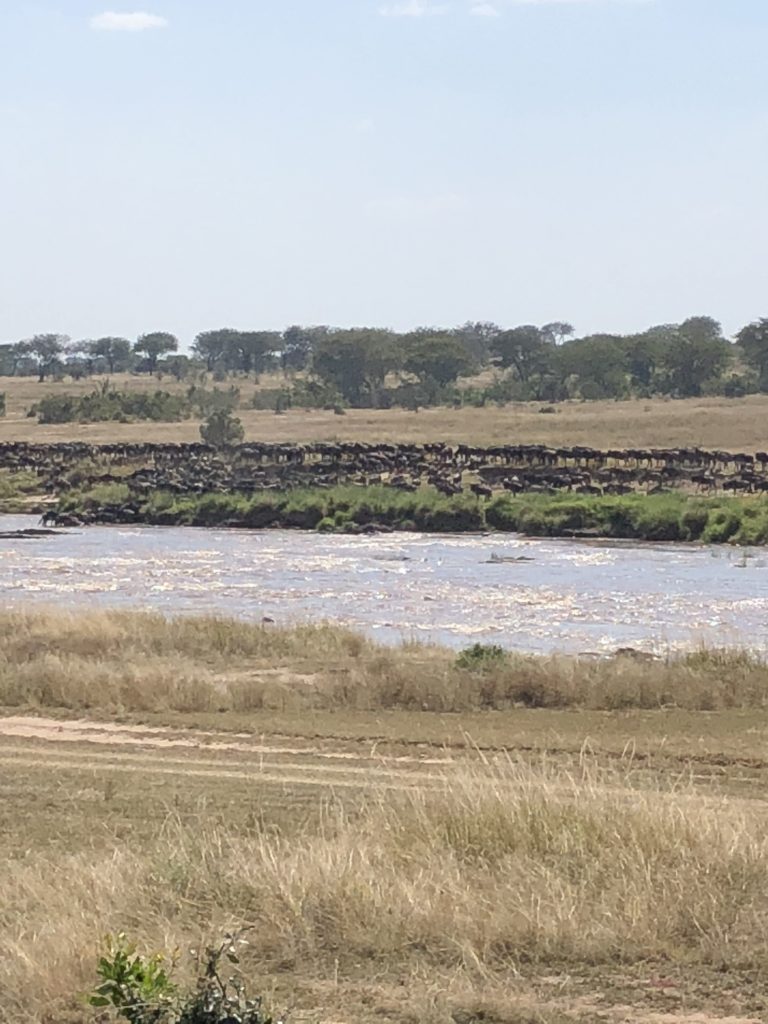
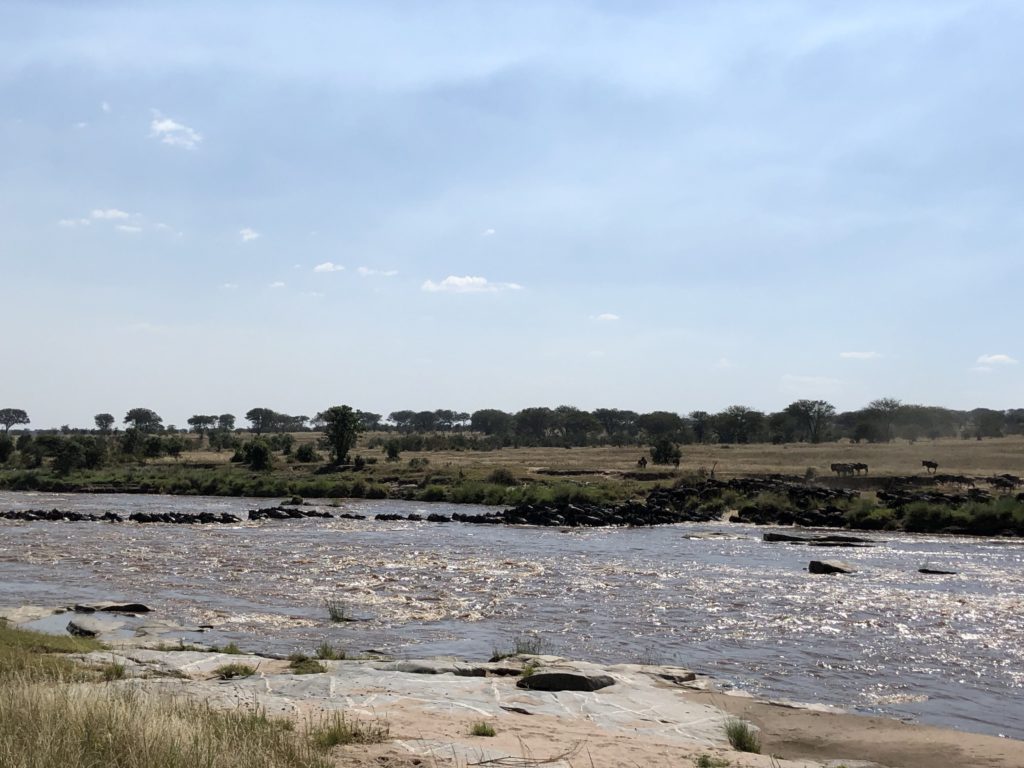
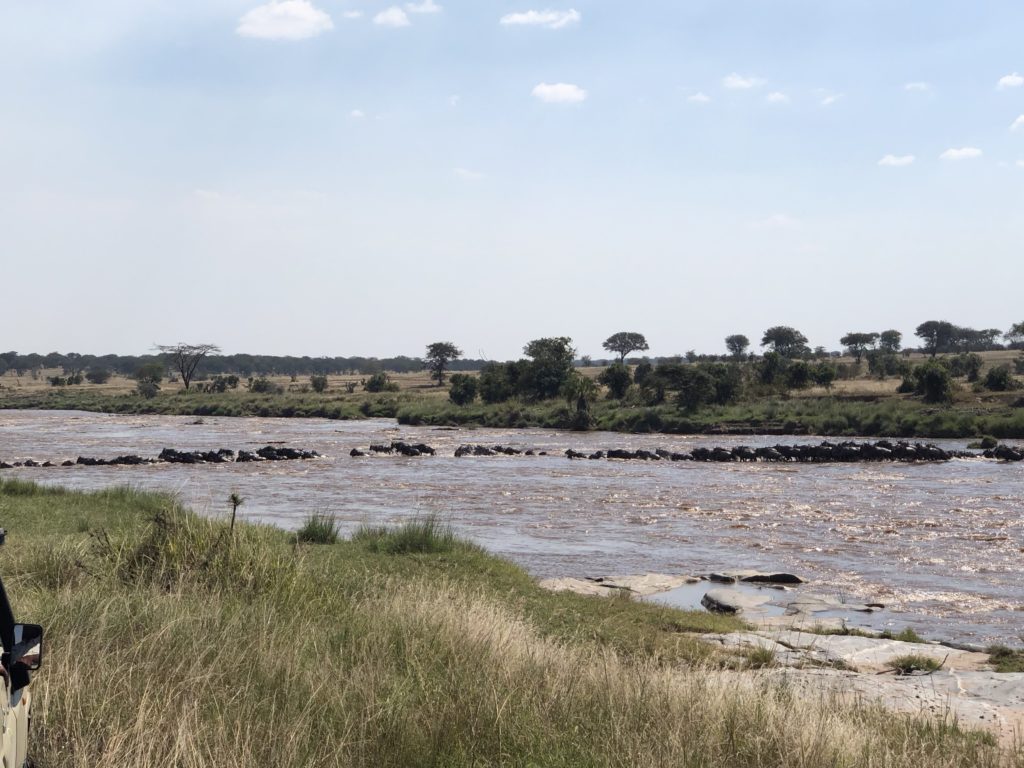
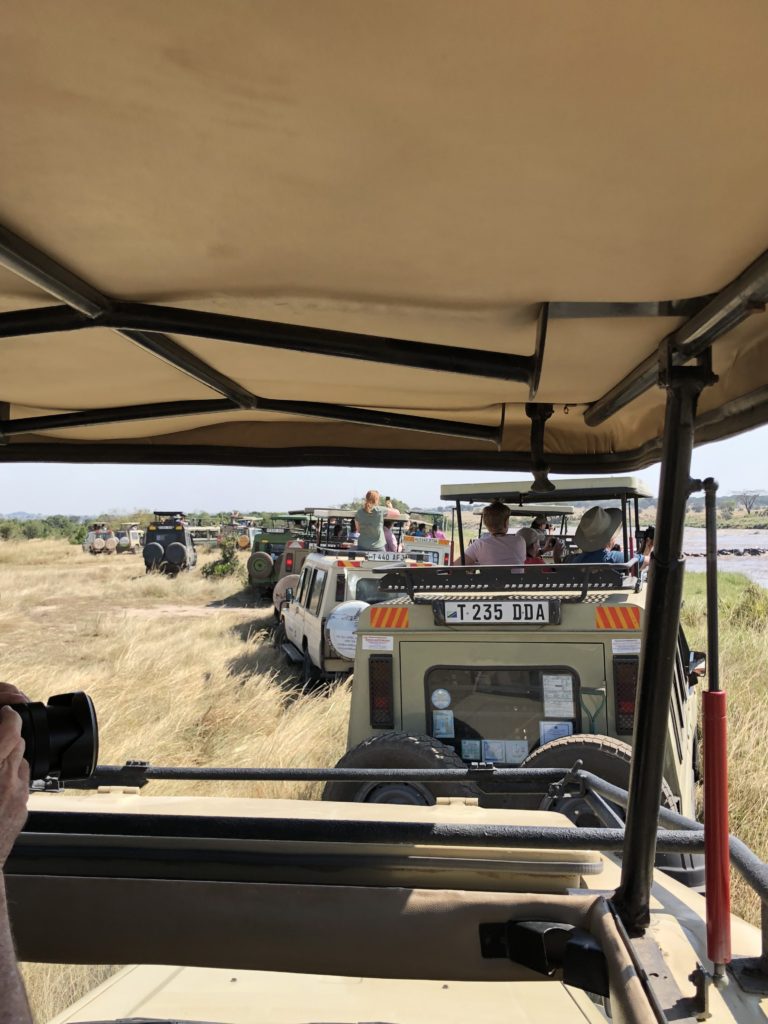
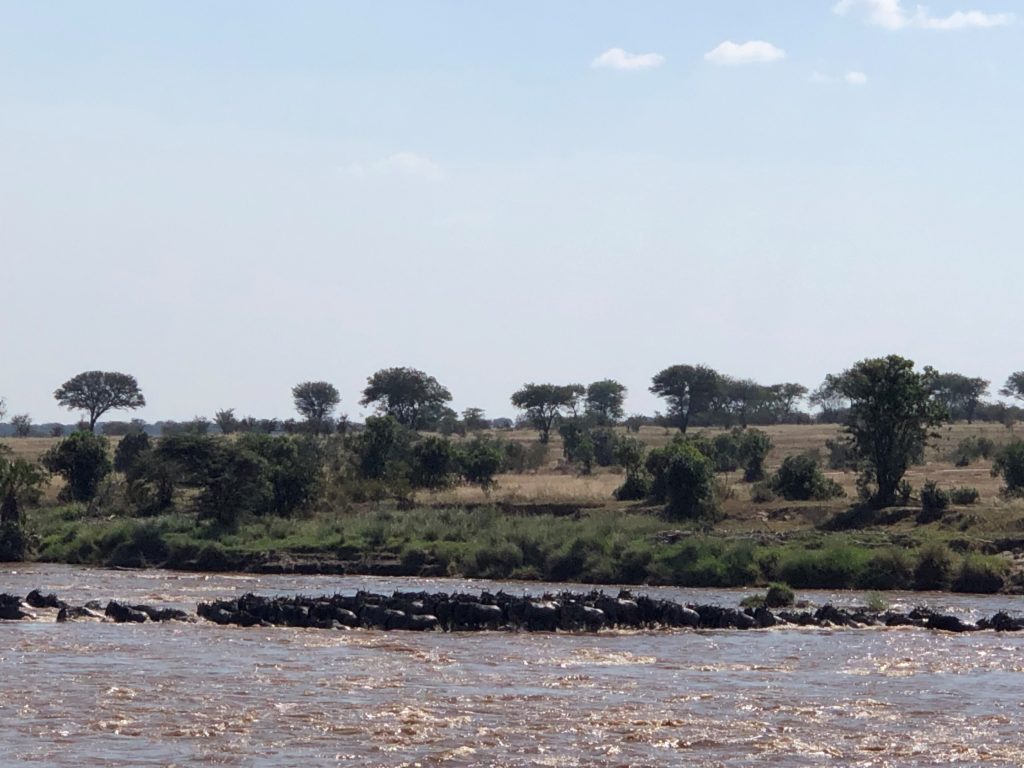
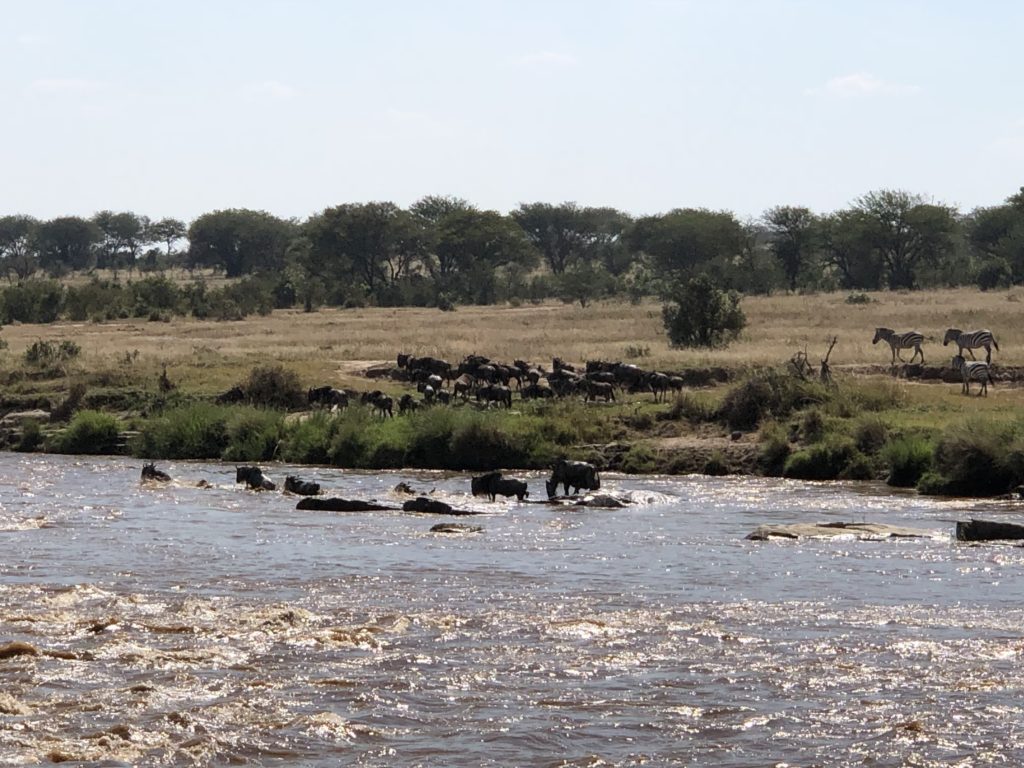
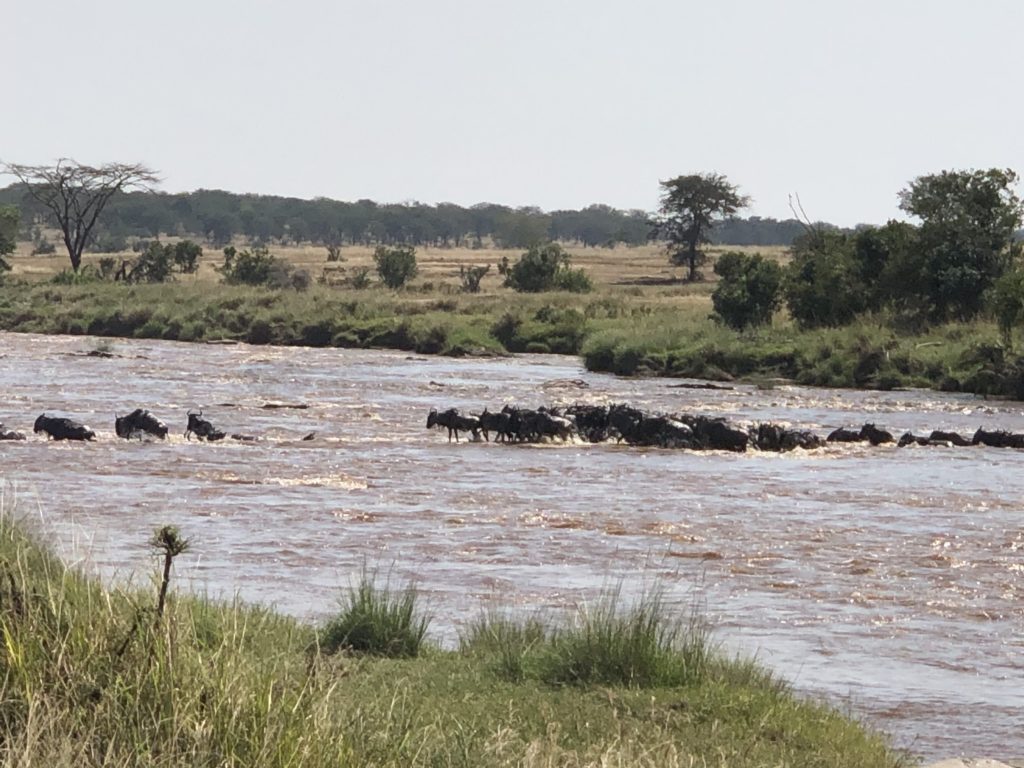
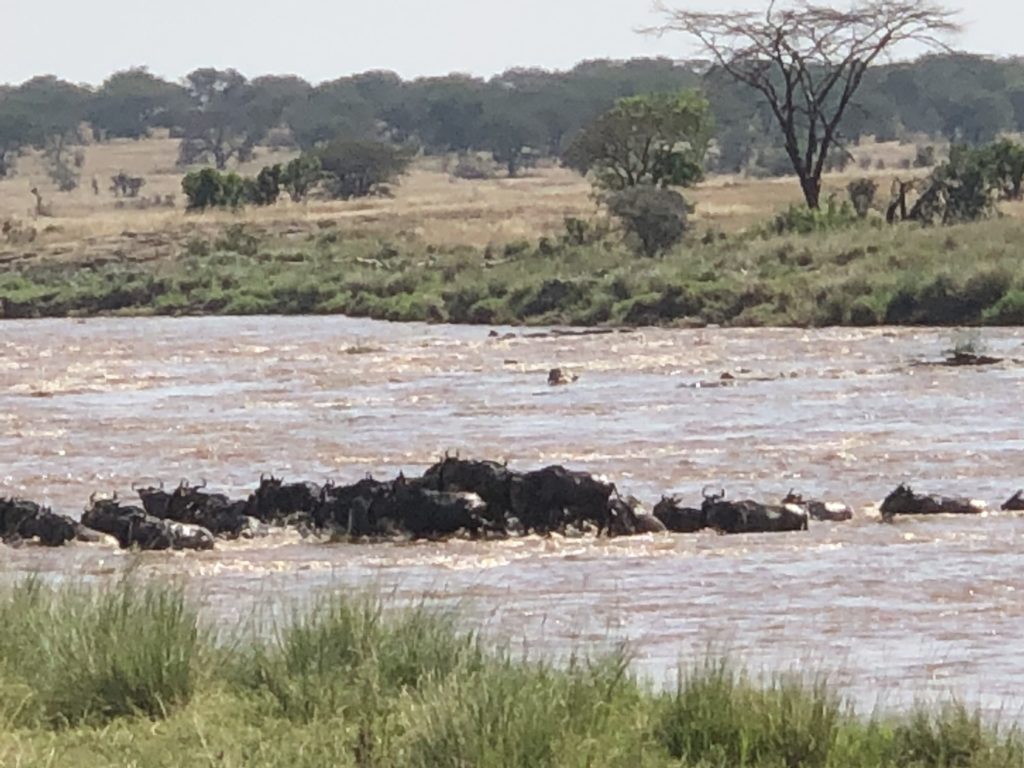
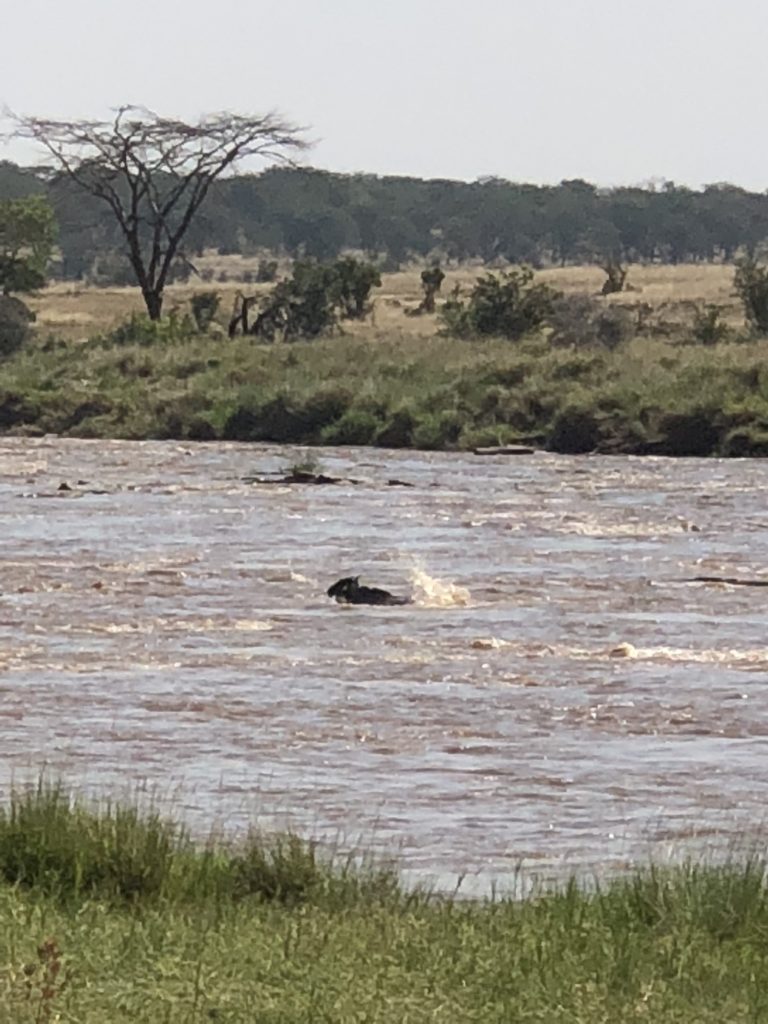
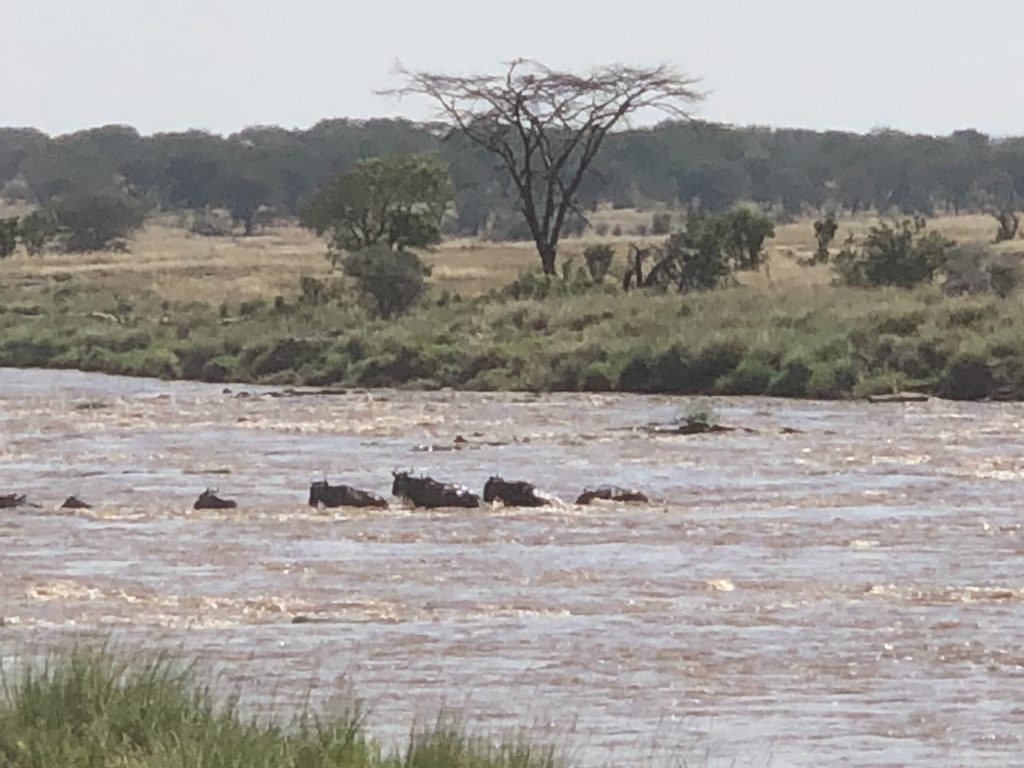
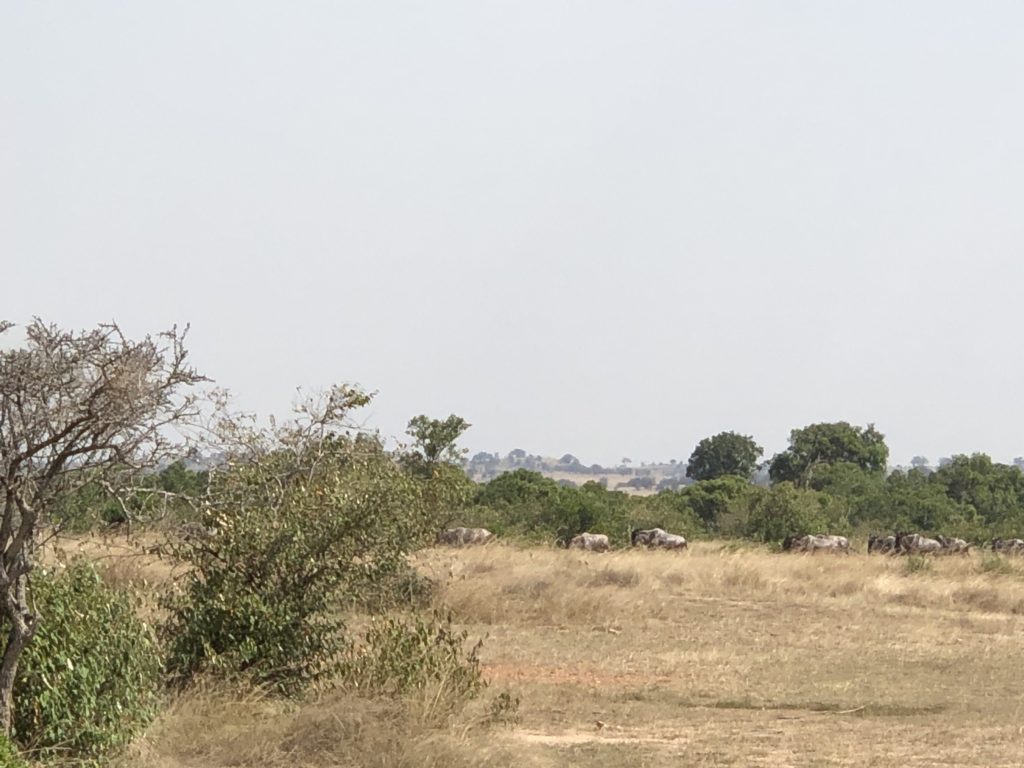





Very cool that you got to witness the wildebeest migration twice. Thanks for sharing the video!